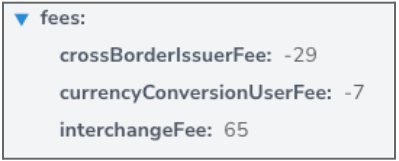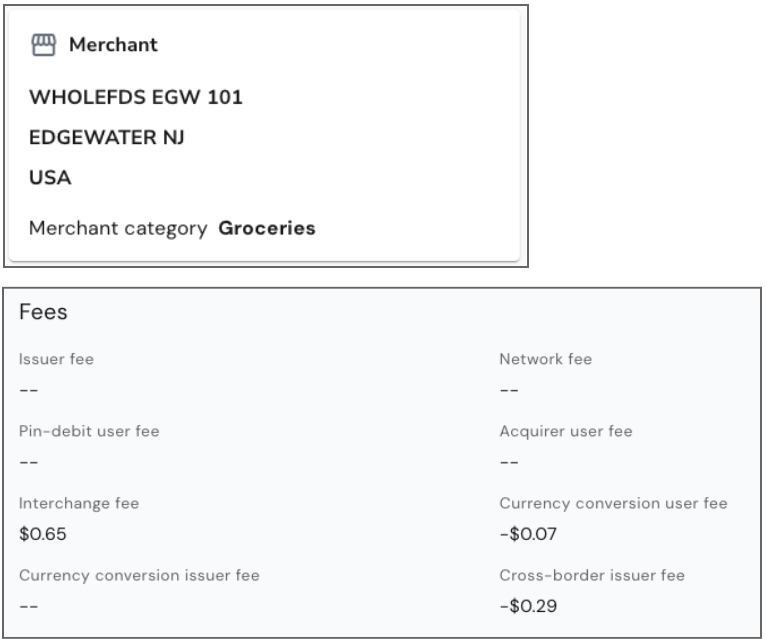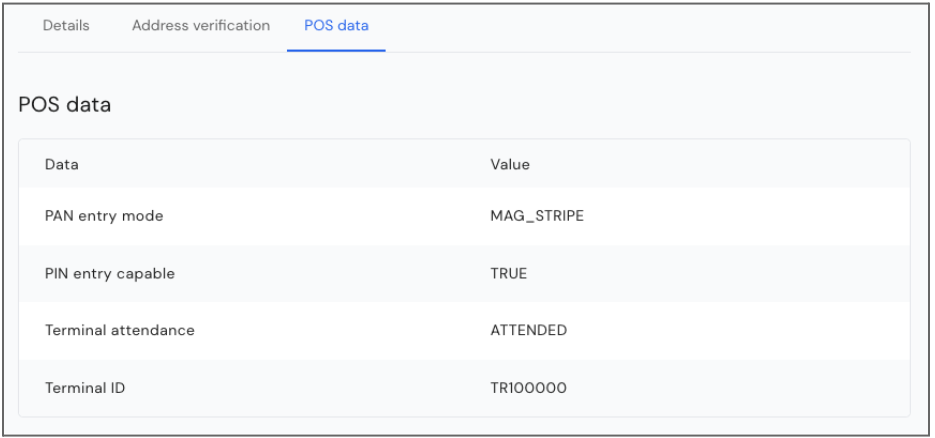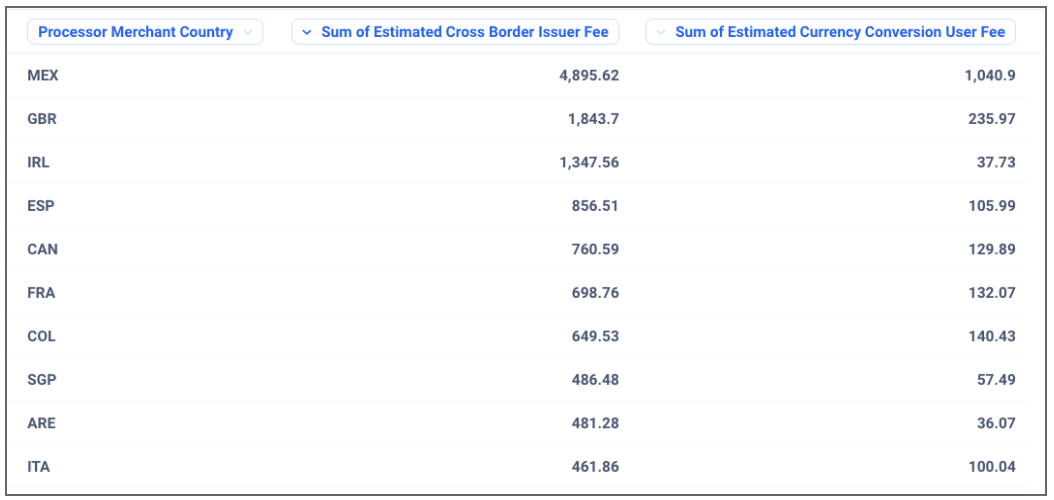Overview
Feature summary
- A cross-border transaction is a transaction where the merchant’s country code is different from the country code of the card BIN
- Cross-border transactions come with a cost to the FinTech
- Options for controlling cross-border transactions:
Feature details
Network fees
Mastercard:- Cross-border issuer fee = 90 bps on the transaction $ volume (Gross Merchandise Value - GMV)
- by default is NOT included in the amount requested from the cardholder
- The network bills this fee to the issuer weekly, and Synctera passes this fee through to the FinTech monthly
- Currency conversion user fee = 20 bps on the transaction $ volume (GMV):
- The estimated fee is by default included in the amount requested from the cardholder
- The actual fee comes through in the daily settlement from the network - occasionally, there is a minor difference between the estimated and the actual fee, resulting in an FX adjustment, which is, by default, also covered by the FinTech
- Cross-border issuer fee = 100 bps on the transaction $ volume (GMV)
- by default is NOT included in the amount requested from the cardholder
- The network bills this fee to the issuer daily, and Synctera passes this fee through to the FinTech monthly
Identification of a cross-border transaction:
- A cross-border transaction is identified in the transaction API, in the authorization gateway, in the Synctera Console and in Synctera Insights
- Transaction API:
- When applicable, cross-border fees would be shown under under user_data.fees:

- Conditions for identifying when cross-border fees apply:
Plain text
- Authorization gateway:
- Conditions for identifying when cross-border fees apply:
Plain text
- Synctera Console (UI):
- Card Transaction Details > Details (Merchant Country Code / Fees):

- Card Transaction Details > POS data (Country, if available):

- Synctera Insights:
- FinTechs can build their own reports based on the Card Transactions Extended Metadata view contained within the Card Reference Dashboard. This view contains the:
- Processor Estimated Cross Border Issuer Fee
- Processor Estimated Currency Conversion User Fee (already part of amount requested from cardholder)
- Example - sum of Estimated Cross Border Issuer Fee and Estimated Currency Conversion User Fee by Merchant Country:

Implementation of controls
Option a: Allow cardholders to approve cross-border transactions and charge a minimum fee
- Reject cross-border transactions by default, but allow the cardholder to approve, across all merchants, specific merchants or per-transaction, with the acceptance of a fee being added (minimum of 2% to be inline with the market).
- Implementation effort:
- FinTech uses the authorization gateway to decline or accept the transactions, based on own rules/framework to allow the cardholder to accept
Option b: Pass fees directly to cardholders
- Charge cardholders a foreign transaction fee when a cross-border transaction is posted:
- The recommended fee is a minimum of 2% for all cross-border transactions up to a maximum of 3% to ensure FinTech is covering the cross-border and FX adjustment costs and earning revenue from these transactions
- Implementation effort:
- A new internal account must be created for this use case - FinTech can contact their Synctera implementation or CS representative for help getting this account setup
- FinTech uses the Fees API to create and post the fee:
- Create a fee template with subtype FOREIGN_TRANSACTION, and an internal fee account. Note that the fee template has a fixed amount, but each fee can override that. We recommend that you use metadata to reference the cross-border transaction to which the fee applies.
- Post the fee using the Create Fee endpoint, and make sure to override the fixed amount with the actual amount (see recommended percentage below).
- FinTech could include the fee in the validation of available balance in the authorization gateway to reduce the likelihood of the cardholder going into negative balance.
- Timing of the posting: listen to the “posted” webhook for the transaction to trigger the fee.
Option c: Disable cross-border transactions
- Disable cross-border transactions at the card product level to automatically decline all cross-border transactions.
- This will be the default option for new card products
- Implementation effort:
- None - this setting is controlled by Synctera on the card product level. FinTechs can contact their Synctera implementation representative for this setting.
Option d: Absorb the fee as a benefit of the program
- Continue to accept and process cross-border transactions and consume the fees on behalf of cardholders
- Implementation effort:
- None
- As an alternative, absorb some of the fees and pass the remainder onto the cardholder as a program benefit (e.g. charge the cardholder 1% of the fee, and absorb the rest).
- Implementation effort:
- Same as for option b
Option e: Educate cardholders to sign up for or switch to merchant accounts registered in the BIN issuing country
- Based on observed usage, educate cardholders on how/when to use the card.
- For example, some merchants route their transactions through their cross-border entities for various reasons.
- The transaction can be initiated in USD, and the card can be in USD, but if the merchants themselves are in the GBR, the cross-border rules apply.
- If the card was issued in the US, and the business/cardholder is signed up to a merchant with their non-US merchant account and address, or via a non-US merchant location, the business/cardholder could:
- establish merchant account based in the US
- contact the merchant directly and ask for all transactions to be processed in USD (some merchants provide this service upon request)
- Implementation effort:
- None
Compliance considerations
- If cross-border transactions are enabled on the card product and: a. FinTech wants the ability to decline a transaction in the authorization gateway based on their own business rules, it needs to be disclosed in the account agreement. b. FinTech charges customers a foreign transaction fee, the fee details must be disclosed in the account and cardholder agreements.
- If cross-border transactions are disabled on the card product, they must be disclosed in the account agreement.
- Creating a case to alert the bank/Synctera Compliance about your selected option for cross-border fees
- Compliance and banks need to sign off on fee and the appropriate disclosures
- Wait for approval and update disclosures

